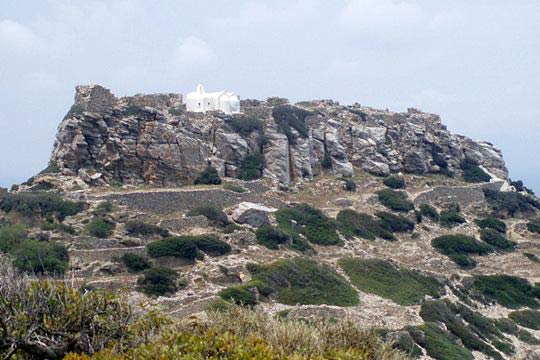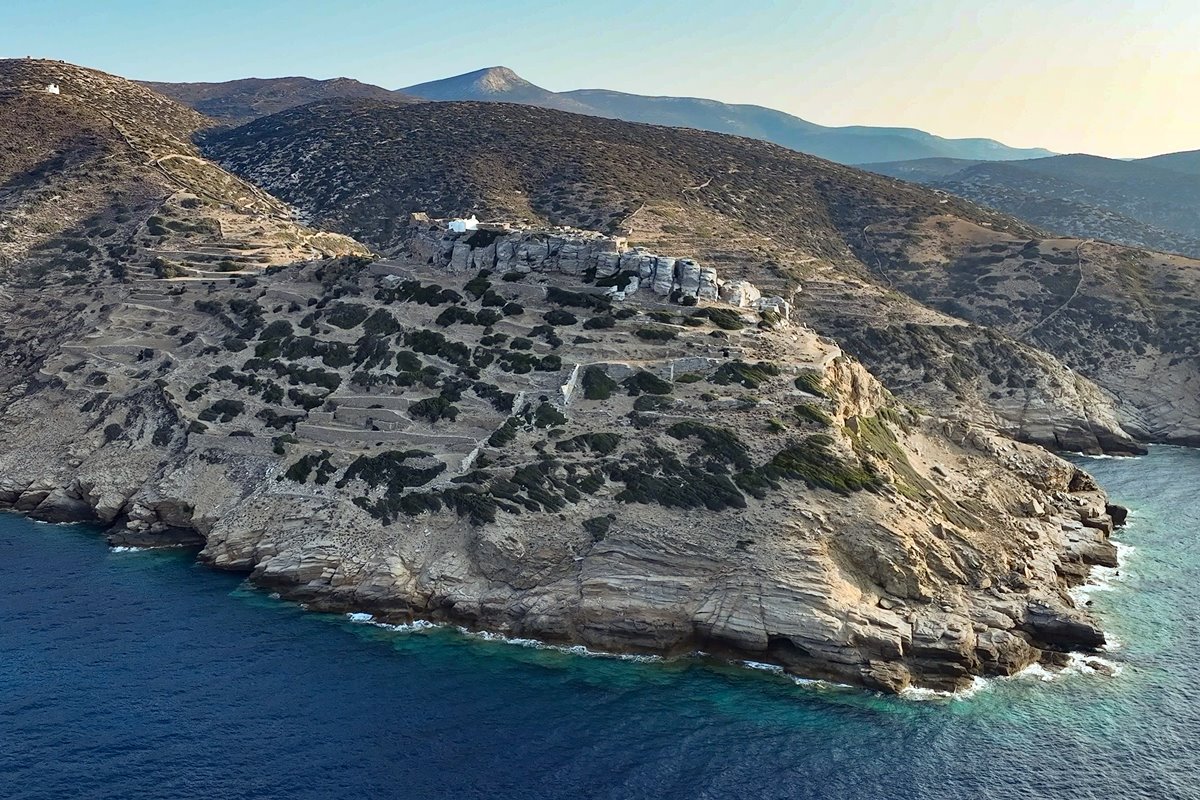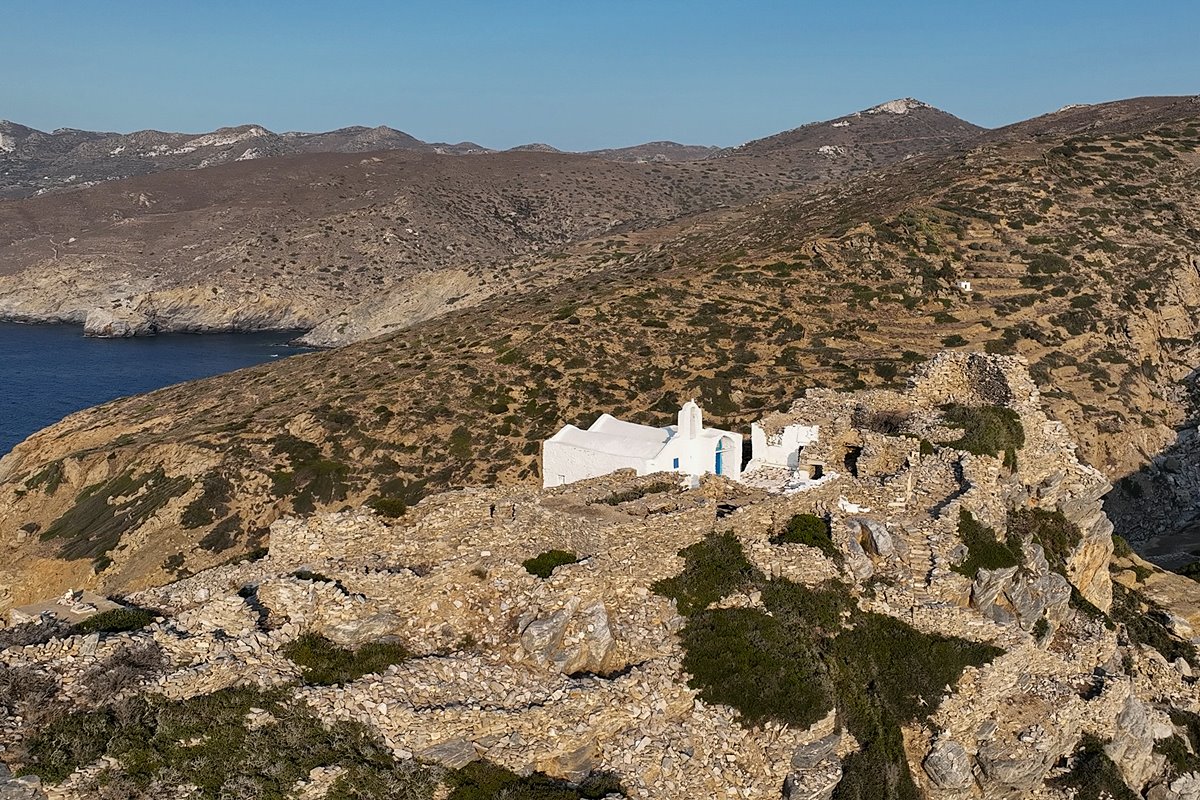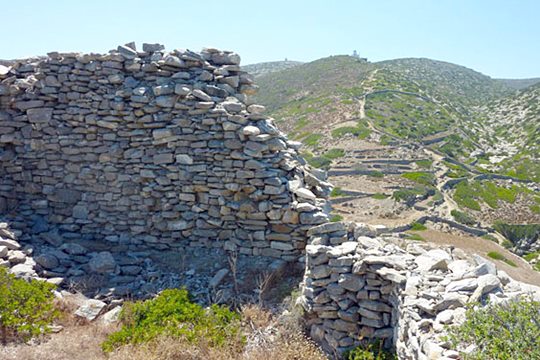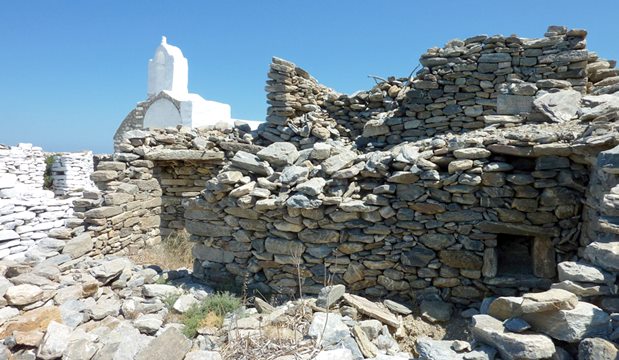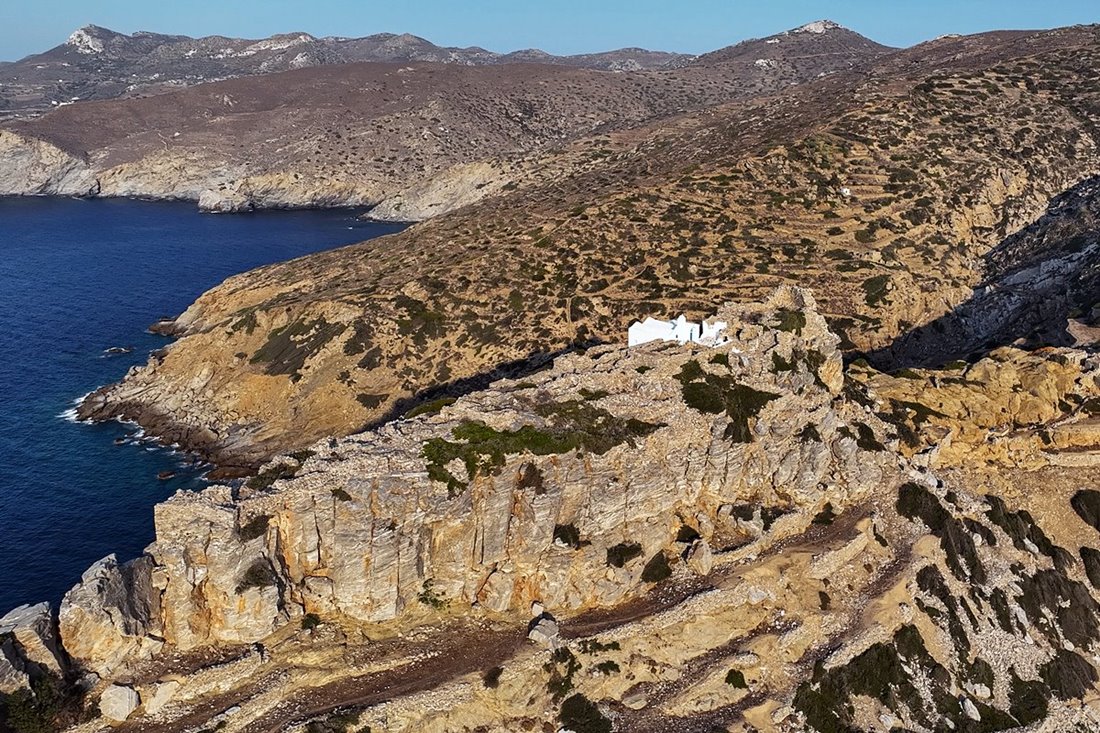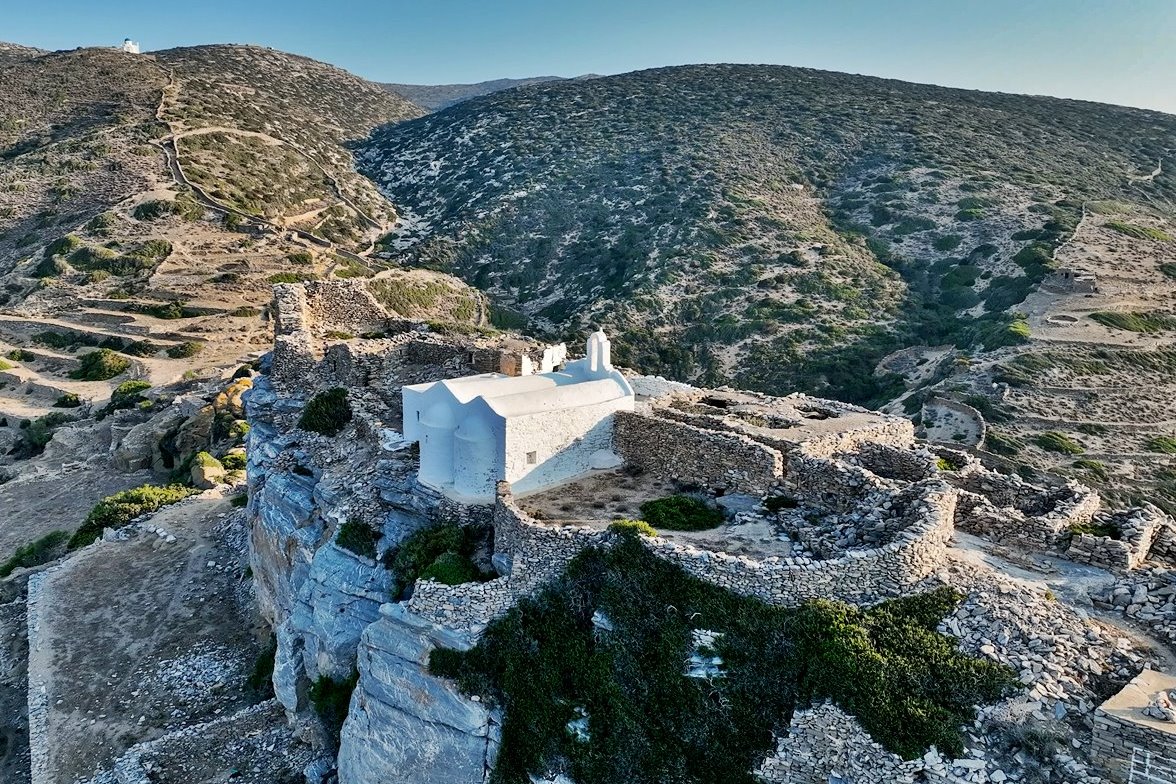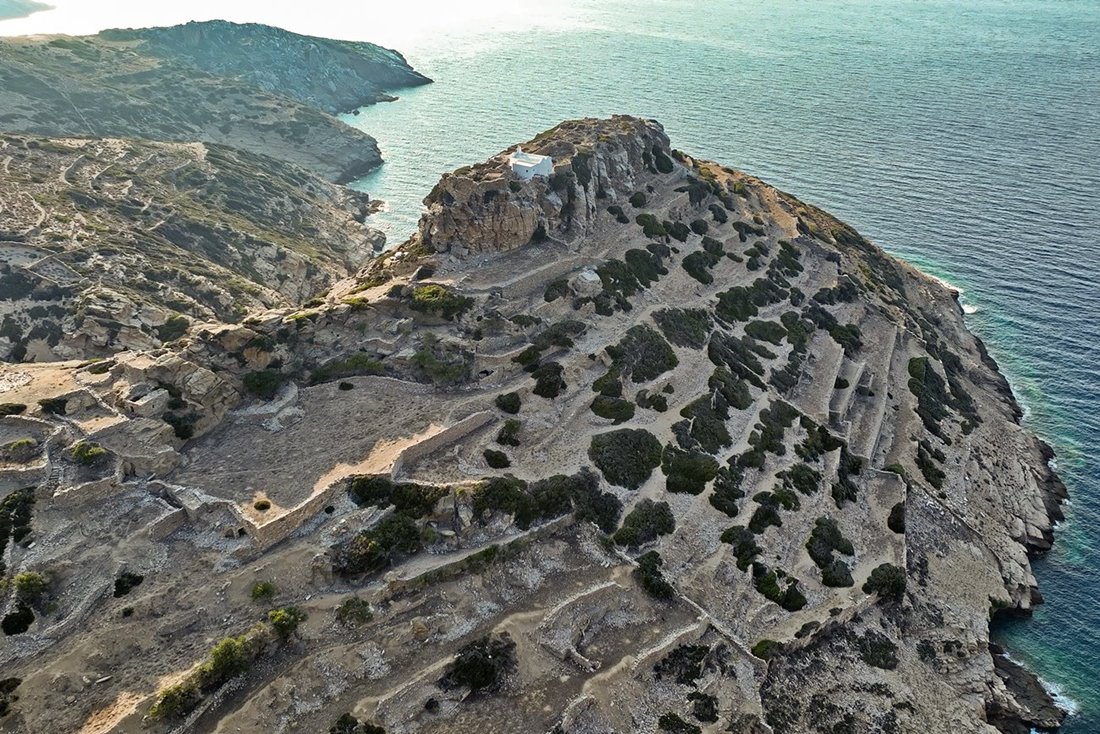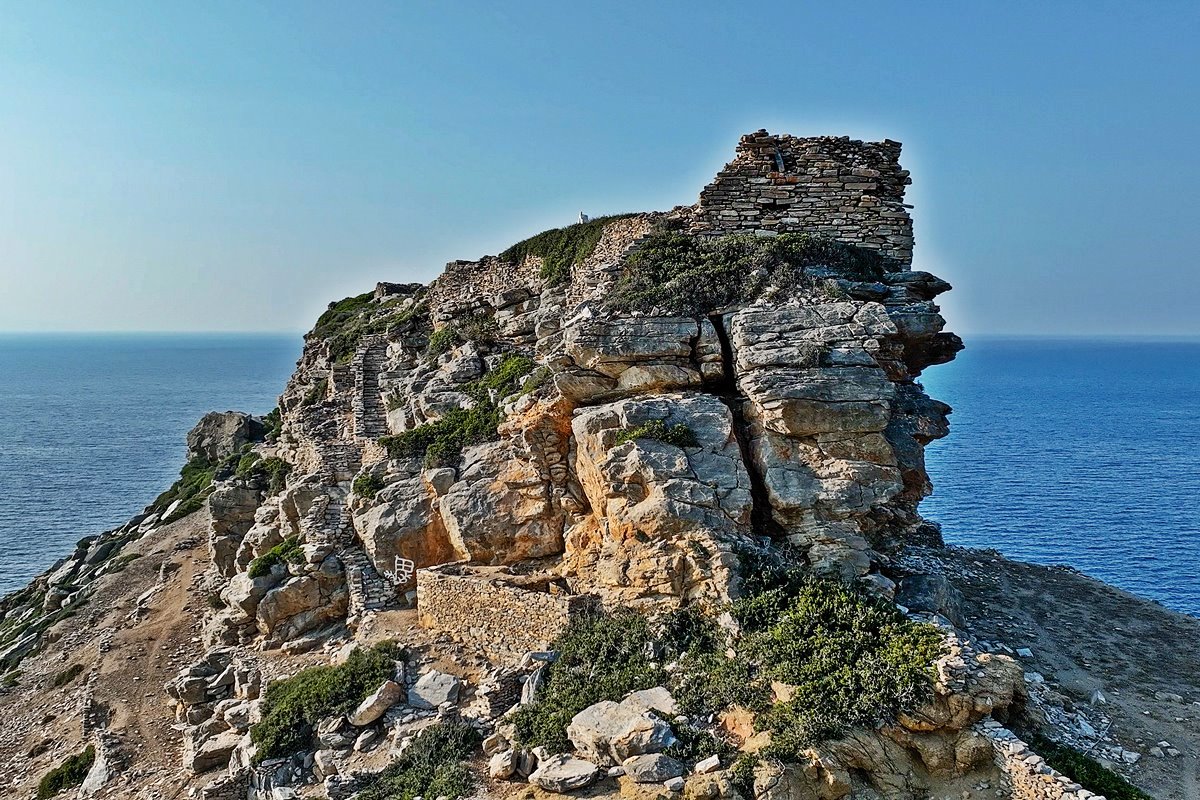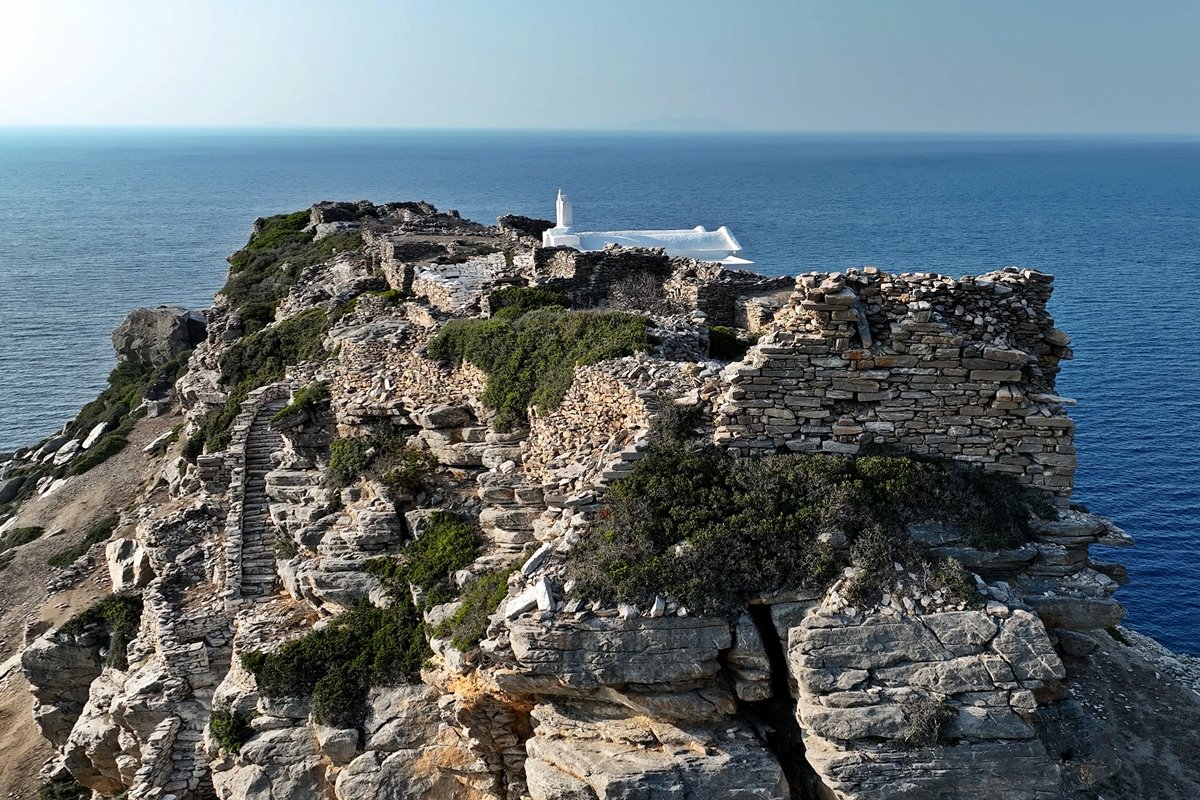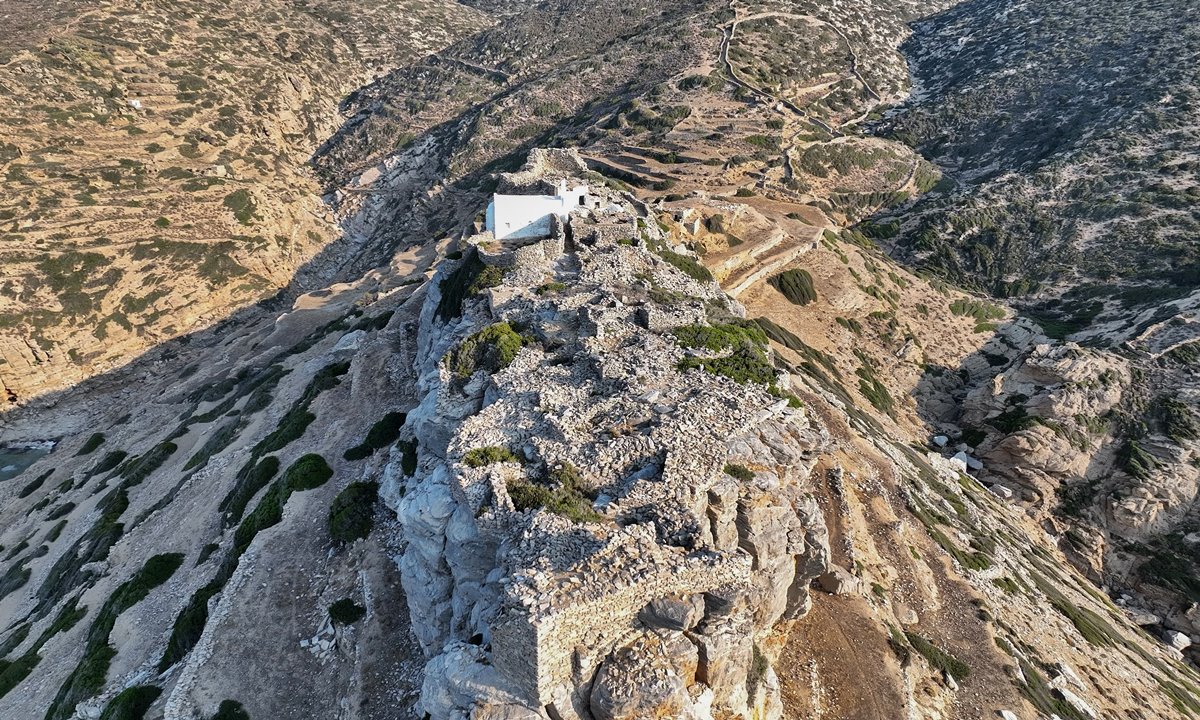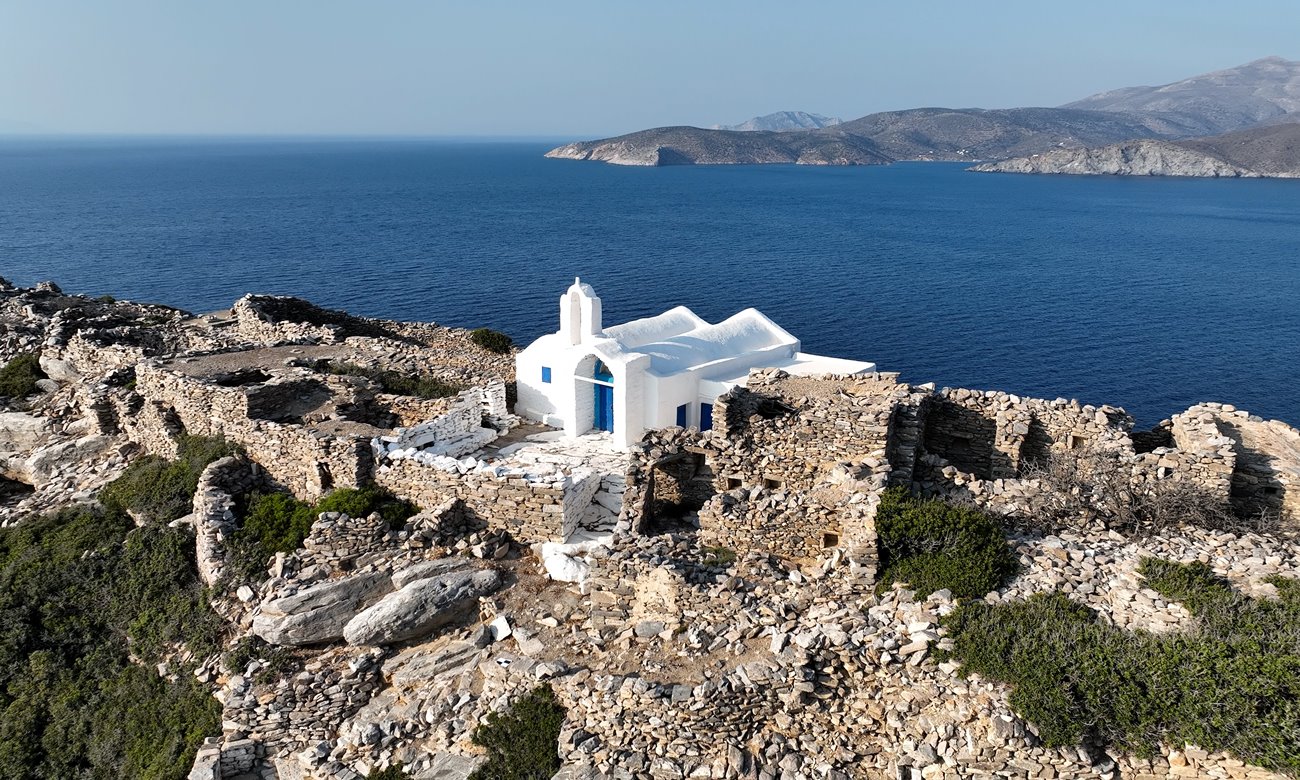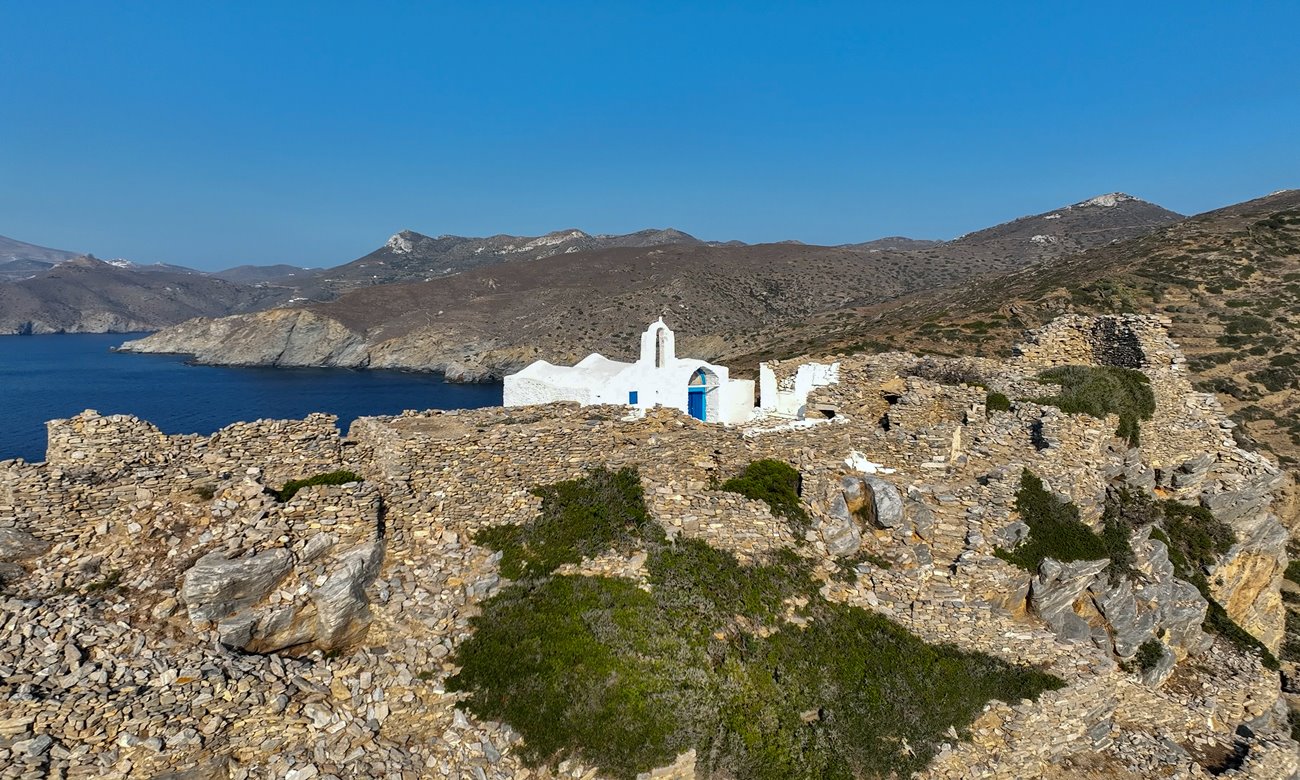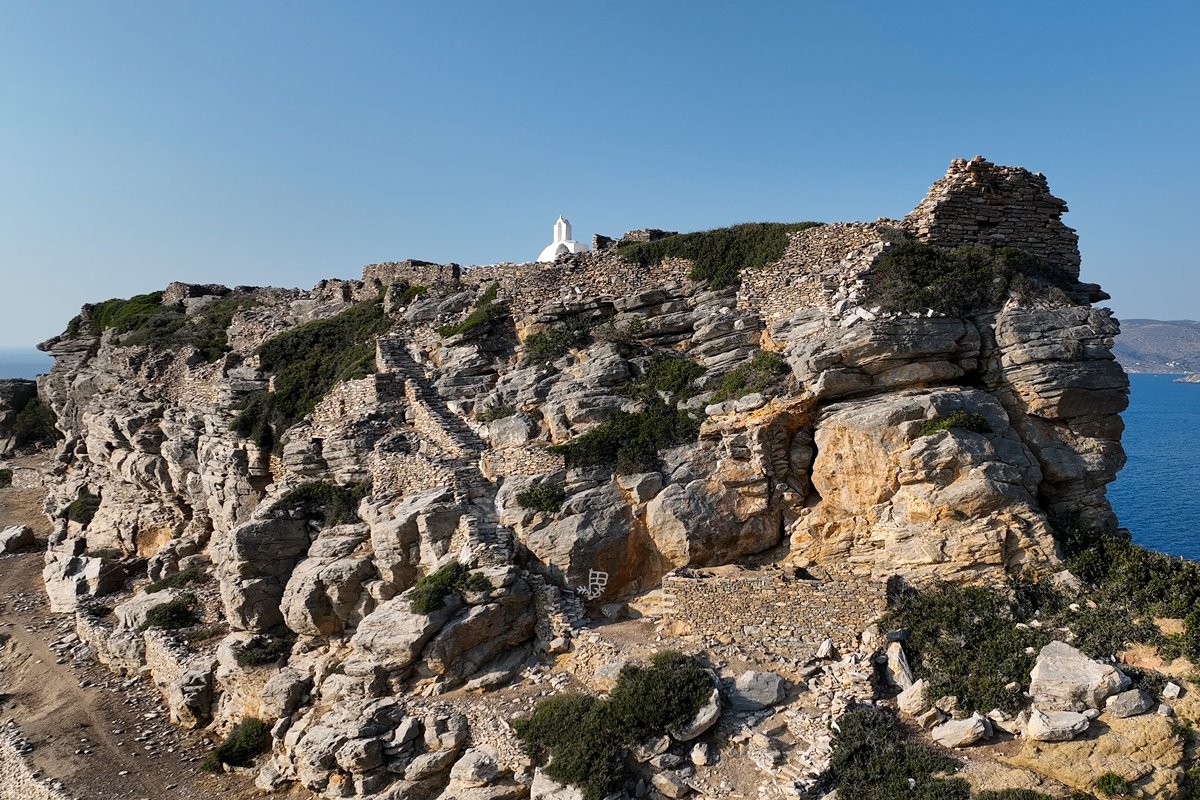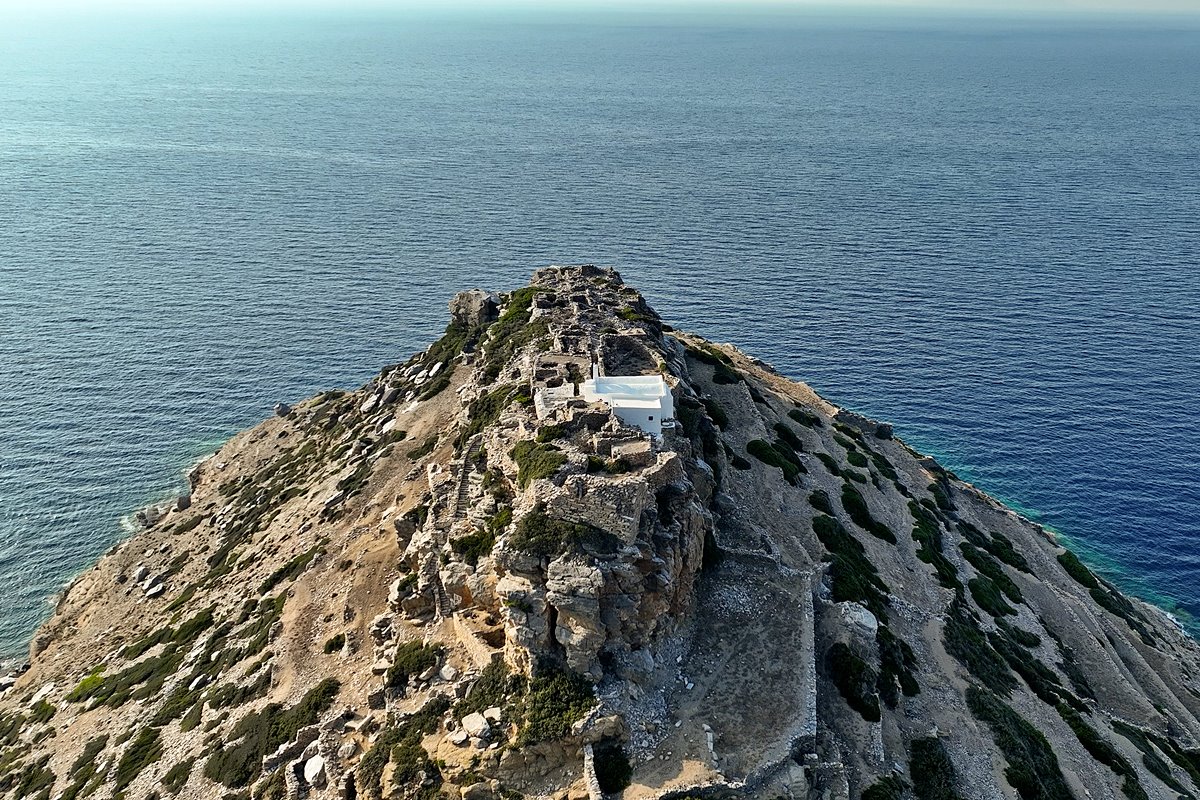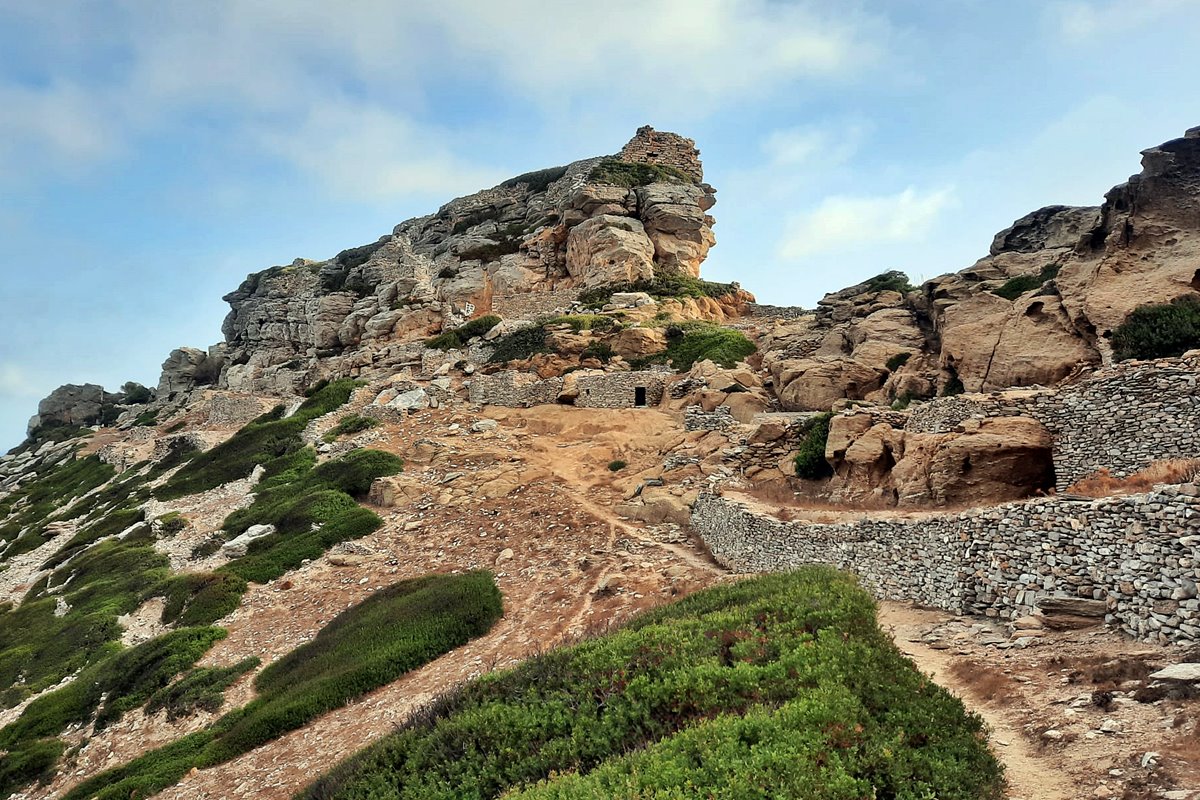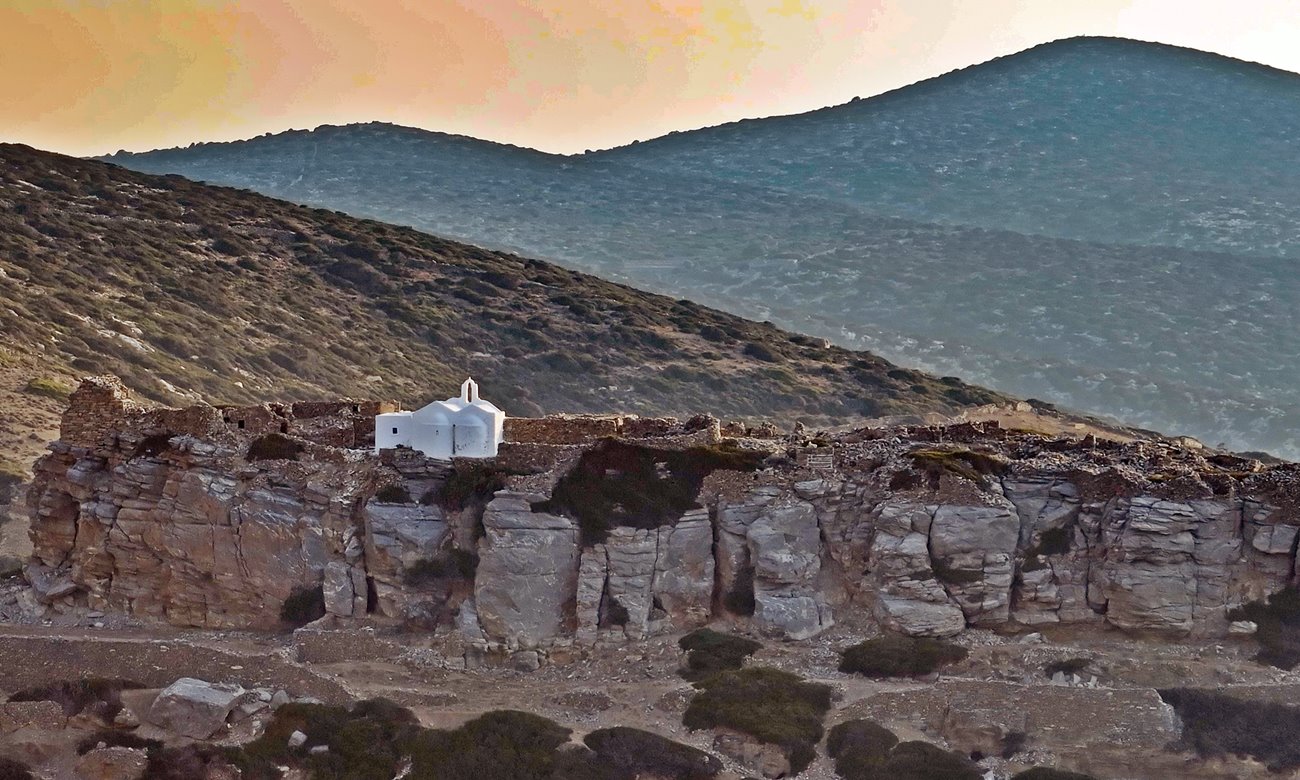Vroutsis, Amorgos, Cyclades,South Aegean
Acropolis of Arkesini
| Location: |
| On a rocky hill on the coast of the SW side of Amorgos island, north from the village Vroutsis |
| Region > Prefecture: | 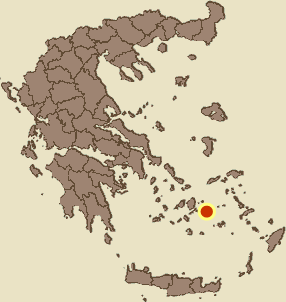 |
| South Aegean Cyclades | |
| Municipality > Town: | |
| City of Amorgos • Vroutsis | |
| Altitude: | |
| Elevation ≈ 75 m |
| Time of Construction | Origin | |
| Antiquity | ANCIENT |
|
| Castle Type | Condition | |
| Medieval Settlement |
Rather Poor
|
An ancient acropolis which maintained its defensive role until the Venetian period of Amorgos (until 1537).
It is located on a rocky hill above the sea, north of the village Vroutsi at the NW side of the island of Amorgos.
There have been many findings on the rock from the classical period, as well as from the cycladic, the Roman, the Hellenistic and the middle-Byzantine periods. There are also ruins of Venetian buildings and fortifications.
There is a small church on the rock dedicated to Panagia Kastriani (Virgin Mary of the Castle)
Structure, Fortification & Buildings
“Kastri” covers an area of approximately 35,000 sq.m. and has an irregular shape, as its fortified enclosure follows the morphology of the terrain. This is not only the part of the fortification located on the steep rock (which is what is mainly depicted in the photos), but the entire area of the settlement. The walls are based on the natural rock and are not preserved along their entire length, but their trace is found around the perimeter of the hill. The ancient walls were utilized and formed the fortification of the medieval city as well, as shown by the distinct masonry superimposed in height in some parts of the fortification.
The walls of the north and eastern sides follow the course of the hill. Due to the steep eastern slope of the hill the wall was relatively low and with its height reaching there 4 - 4.30m. Today it is preserved up to this height, while the perimeter is not preserved. Its thickness ranges from 1.20 to 1.60 m. Its masonry consists of elongated stones that in some cases reach 2.70m, which are arranged in horizontal bands.
In the SE and especially on the southern side of the hill of Arkesini, the preservation of the wall is fragmentary, as a result of which it is not possible to determine precisely its outline. On the west side, the wall is preserved only in a section about 20m long, however its existence is indisputable, as it is the side with the smoothest access to the citadel, therefore also the most vulnerable. On this side must have been the gate, which is not preserved today. This wall protected the ancient city in its heyday during the Hellenistic period, its reconstructions, however, in the upper parts of discrete masonry, smaller irregular stones from the on-site carving of the rock, show that it was also used later, and during Early-Byzantine times.
The rock that rises in the center of the hill of Arkesini is the acropolis of the ancient city. It is an area of 3,000 sq.m., surrounded by a fortified enclosure 270 meters long. Its shape is long and narrow, following the morphology of the rock. The medieval walls rest on the buildings of the ancient wall, which in the upper parts have undergone earlier reconstructions. At the end of the SE side there is a massive building that protected the gate and the vulnerable side of the citadel. It was probably the donjon of the castle.
In the SE part of the acropolis, before the tower, there is a church, Panagia Kastriani. It is a double-aisled arched church, which was probably built in the 13th century, on top of ancient building remains, perhaps of the temple of Aphrodite, while also in its masonry there is construction material in second use.
On the plateau of the acropolis, extensive building remains from various unidentified buildings can be found. Sufficiency in drinking water was achieved by cisterns which collected rainwater, as there are no water sources on the rock.
The superstructures of the fortified enclosure of the acropolis and the similar masonry of the tower, consisting mostly of small irregular stones, are considered non-ancient and date back to the 13th century, the time of the foundation of Panagia Kastriani.
| First entry in Kastrologos: | July 2014 | Last update of info and text: | April 2024 | Last addition of photo/video: | April 2024 |
Sources
- Website Cycladic Castles of Ephorate of Antiquities of Cyclades, ΚΑΣΤΡΙ (ΑΡΧΑΙΑ ΑΡΚΕΣΙΝΗ) ΑΜΟΡΓΟΥ
- Video by the Ephorate of Antiquities of Cyclades Καστρί (Αρχαία Αρκεσίνη) Αμοργού (November 2023)
- Μ. Κουμανούδης, «Για ένα κομμάτι γης, Η διαμάχη Σανούδων-Γκίζη για το νησί της Αμοργού (14ος αι.)», Θησαυρίσματα 29 (1999), 45 – 89.
- Α. Μηλιαράκης, «Ὑπομνήματα περιγραφικά τῶν Κυκλάδων Νήσων κατά μέρος: Ἀμοργός», Ἐν Ἀθήναις. Εκ του Τυπογραφείου των Αδελφών Περρή, 1884.
|
|
| Access |
|---|
| Approach to the monument: |
| A path from Vroutsi leads to the foot of the hill after a 45min hike. |
| Entrance: |
| Free entrance |
| Other castles around |
|---|
| Castle of Amorgos |
| Fort of Agios Georgios Valsamitis |



